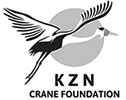About the Grassland and Wetland Habitats
The grassland region, which covers a third of South Africa, is the country’s largest biome. Its level of biodiversity is second only to the Cape Floristic Region and, from the perspective of human existence, it is our most important area. The grasslands act as a huge sponge which traps and stores rain-water, then slowly releases it as the source of most of our river systems. Wetlands are an essential part of this and their importance in this biome is globally recognised in the region’s five Ramsar registered wetlands.
Blue Swallow
The area is home to 45% of South Africa’s endemic mammals and 10 globally threatened birds (including Wattled Cranes) and has over 3,500 plant species (of 80 different vegetation types) of which 60% are listed as endangered or vulnerable.
Exotic Plantations
There is, however, a major conflict between the long-term sustainability of the grasslands and human needs. The area is South Africa’s economic heartland and supports the cultivation of 60% of our commercial crops, 44% of our cattle, and 32% of our sheep. Over 40% of all mining activity, 92% of commercial plantations, and 40% of the country’s human population are to be found in this region. The area also produces 70% of our electricity and hence the bulk of our CO2 footprint.
It is the most at-risk of South Africa’s biomes in that more than 40% of it has already been irreversibly modified (and continues to change at a rate of 1.2% per annum). Of the remainder, 60% is considered to be threatened and less than 3% is under formal protection. The biome’s river ecosystems are similarly under threat, with 83% ranked as threatened and 48% critically endangered.
Oribi




